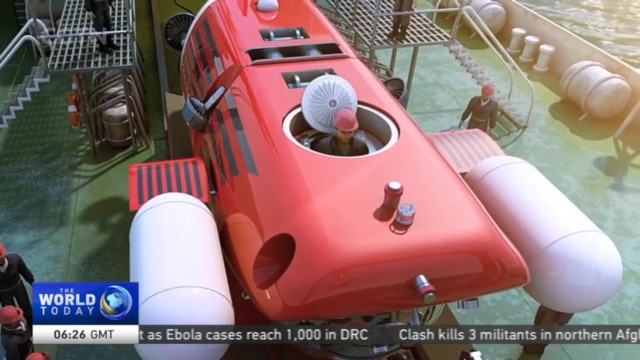
14:49, 24-Mar-2019
Discovering the Unknown: Sub being built for the ocean bottom
Updated
14:40, 27-Mar-2019
03:48

The final frontier may not be space, but a part of the earth itself. The Mariana Trench, the deepest part of the Pacific, and for that matter all oceans, has yet to really be explored by humans. Yet a brave team from China aims to send the very first manned submarine down there for study, and to unlock secrets about the earth. CGTN's Xu Xinchen sat down with the lead scientist who also helped build China's Jiaolong Submarine and here's the report.
70 percent of the earth is covered by water. But there's so little humans know about the vast oceans. That's why scientists have started descending into a part of the ocean known as the Hadal Zone - a name derived from Greek God of the Death - Hades. It's 6000 to 11,000 meters underwater.
CUI WEICHENG, DIRECTOR HADAL SCIENCE AND TECHNOLOGY RESEARCH CENTER, SHOU "Even nowadays, there is no actual submersible, manned or unmanned which can dive 11,000 meters."
Professor Cui is leading a project called the Rainbow Fish, aiming to send a manned submersible down to the Challenger Deep of the Mariana Trench - the very bottom of the ocean. The Japanese have sent unmanned subs in the past, but have lost contact. Hollywood Director James Cameron took a solo dive to the bottom back in 2012. However, Cui's goal is to build an operational submarine that can carry multiple scientists all the way down.
XU XINCHEN REPORTER "Diving into the deepest part of ocean sounds cool. But what is the scientific significance of doing that? And why are people, countries doing it?"
CUI WEICHENG, DIRECTOR HADAL SCIENCE AND TECHNOLOGY RESEARCH CENTER, SHOU "For the shallow parts of oceans, we've done research. But for the deepest part, there is a blank."
Cui believes that humans need to go down, see the trench, and know it before using marine resources responsibly. As one of the senior designers for the China-made Jiaolong submarine-still known as the operational sub with the deepest dive, the Rainbow Fish project was jump started. An unmanned sub took a dive into the Mariana Trench in December 2016. While it did not reach the bottom, it showed that the project is feasible. Yet, from unmanned to manned, the cabin is the most difficult part.
CUI WEICHENG, DIRECTOR HADAL SCIENCE AND TECHNOLOGY RESEARCH CENTER, SHOU "Particularly for these three windows, it's very challenging. Because this part is made from steel, and here, we made it with glass."
Scaled down manned spheres were made, and put into a pressure chamber for testing.
CUI WEICHENG, DIRECTOR HADAL SCIENCE AND TECHNOLOGY RESEARCH CENTER, SHOU "This is the cover of the chamber. When it is closed, there is a small pipe to pour water inside to increase the water pressure, then simulate the deep sea pressure."
The team is still searching for the right steel to construct the manned balloon capsule so that it can endure pressure.
XU XINCHEN SHANGHAI "This is what the manned Rainbow Fish will look like, at least for now. And this sub can reach the deepest part of the ocean in about two and half hours."
Nevertheless, Cui says priority number one is building an operational submarine that can take scientists to the deepest part of the ocean and quickly, not just setting records. He says going there will satisfy human curiosity, and give us invaluable information about Earth's prosperity. Xu Xinchen, CGTN, Shanghai.

SITEMAP
Copyright © 2018 CGTN. Beijing ICP prepared NO.16065310-3
Copyright © 2018 CGTN. Beijing ICP prepared NO.16065310-3